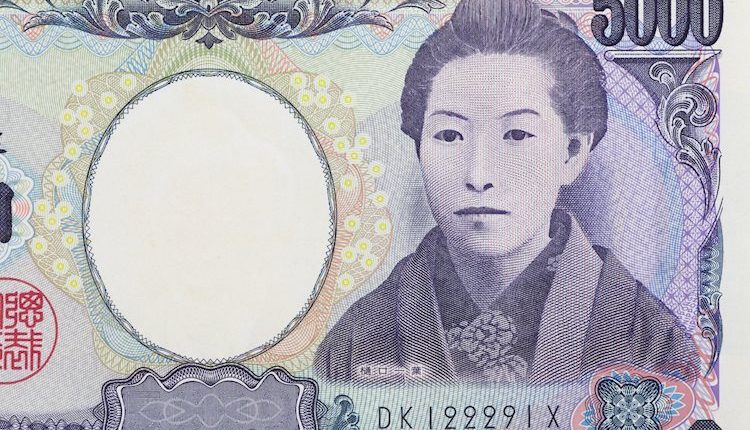- The Japanese Yen rallied in reaction as a stronger Tokyo CPI lifted BoJ rate hike bets.
- The USD languishes near a two-week low and contributes to USD/JPY’s decline.
- The technical setup backs prospects for a further decline infr the major currency pair.
The Japanese Yen (JPY) strengthens across the board following the release of strong November consumer inflation figures from Tokyo, Japan’s capital, which backs the case for another Bank of Japan (BoJ) interest rate hike in December. Apart from this, geopolitical risks stemming from the Russia-Ukraine war, concerns about US President-elect Donald Trump’s tariff plans and a slight deterioration in the global risk sentiment drive haven flows towards the JPY.
Meanwhile, the recent downfall in the US Treasury bond yields, which followed Scott Bessent’s nomination as the US Treasury secretary, turns out to be another factor benefiting the lower-yielding JPY. The US Dollar (USD), on the other hand, languishes near a two-week low amid bets that the Federal Reserve (Fed) will cut rates in December and contributes to the USD/JPY pair’s slide below the 150.00 psychological mark or the lowest level since October 21.
The Japanese Yen strengthens in the wake of speculations for a December BoJ rate hike
- The Statistics Bureau of Japan reported on Friday that the headline Tokyo Consumer Price Index (CPI) surged 2.6% year-on-year in November as compared to 1.8% in the previous month.
- Meanwhile, core CPI, which excludes volatile fresh food items, rose 2.2% YoY and a gauge that strips out both energy and fresh food costs also climbed by 2.2% during the reported month.
- A separate report showed Japan’s Unemployment Rate edged higher as expected, to 2.5% in October and Retail Sales grew 1.6% YoY as compared to 0.5% in September and 2.2% expected.
- Adding to this, Japan’s Industrial Production registered strong growth of 3% in October as compared to 1.6% in the previous month, though the reading was short of the 3.9% rise anticipated.
- Nevertheless, stronger inflation figures continue to fuel speculations that the Bank of Japan (BoJ) will hike interest rates again at its next monetary policy meeting in December.
- Adding to this, worries that US President-elect Donald Trump’s trade tariffs will affect the global economy and the protracted Russia-Ukraine war weigh on the market sentiment.
- The US bond investors cheered the nomination of Scott Bessent, who is seen as a fiscal conservative and will likely want to keep a leash on US deficits, as the US Treasury Secretary.
- This keeps the benchmark 10-year US Treasury bond yields and the US Dollar depressed near a two-week low, which is seen exerting additional pressure on the USD/JPY pair.
USD/JPY seems vulnerable; breakdown below 38.2% Fibo. and 150.00 mark in play
From a technical perspective, an intraday breakdown below the 38.2% Fibonacci retracement level of the September-November rally and the 150.00 mark could be seen as a key trigger for bearish traders. Moreover, oscillators on the daily chart have been gaining negative traction and are still away from being in the oversold zone. This, in turn, supports prospects for a further near-term depreciating move for the USD/JPY pair, towards the next relevant support near the 149.45 region. The downward trajectory could extend further to the 148.00 neighborhood, or the 50% retracement level.
On the flip side, the previous monthly trough, around the 150.45 zone, now seems to act as an immediate hurdle ahead of the 152.00 mark. The latter coincides with the very important 200-day Simple Moving Average (SMA) support breakpoint and should act as a key pivotal point. A sustained strength beyond might trigger a short-covering rally towards the 152.65-152.70 intermediate hurdle en route to the 153.00 round figure and the 153.30-153.35 congestion zone.
Japanese Yen FAQs
The Japanese Yen (JPY) is one of the world’s most traded currencies. Its value is broadly determined by the performance of the Japanese economy, but more specifically by the Bank of Japan’s policy, the differential between Japanese and US bond yields, or risk sentiment among traders, among other factors.
One of the Bank of Japan’s mandates is currency control, so its moves are key for the Yen. The BoJ has directly intervened in currency markets sometimes, generally to lower the value of the Yen, although it refrains from doing it often due to political concerns of its main trading partners. The BoJ ultra-loose monetary policy between 2013 and 2024 caused the Yen to depreciate against its main currency peers due to an increasing policy divergence between the Bank of Japan and other main central banks. More recently, the gradually unwinding of this ultra-loose policy has given some support to the Yen.
Over the last decade, the BoJ’s stance of sticking to ultra-loose monetary policy has led to a widening policy divergence with other central banks, particularly with the US Federal Reserve. This supported a widening of the differential between the 10-year US and Japanese bonds, which favored the US Dollar against the Japanese Yen. The BoJ decision in 2024 to gradually abandon the ultra-loose policy, coupled with interest-rate cuts in other major central banks, is narrowing this differential.
The Japanese Yen is often seen as a safe-haven investment. This means that in times of market stress, investors are more likely to put their money in the Japanese currency due to its supposed reliability and stability. Turbulent times are likely to strengthen the Yen’s value against other currencies seen as more risky to invest in.
Read the full article here

